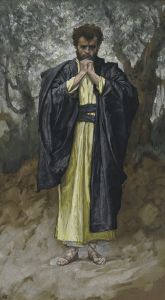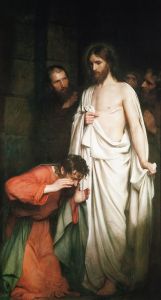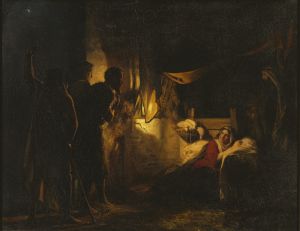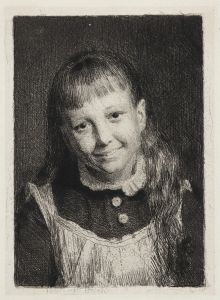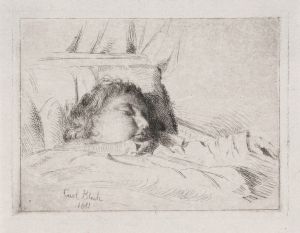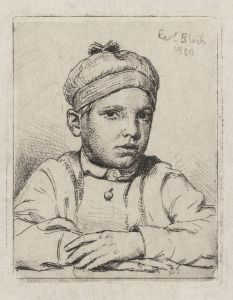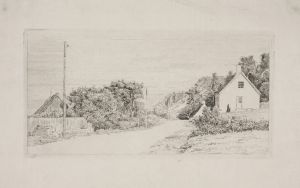
Christ and the doubting Thomas
A hand-painted replica of Carl Bloch’s masterpiece Christ and the doubting Thomas, meticulously crafted by professional artists to capture the true essence of the original. Each piece is created with museum-quality canvas and rare mineral pigments, carefully painted by experienced artists with delicate brushstrokes and rich, layered colors to perfectly recreate the texture of the original artwork. Unlike machine-printed reproductions, this hand-painted version brings the painting to life, infused with the artist’s emotions and skill in every stroke. Whether for personal collection or home decoration, it instantly elevates the artistic atmosphere of any space.
"Christ and the Doubting Thomas" is a painting by the Danish artist Carl Heinrich Bloch, created in 1881. Bloch was a prominent 19th-century painter known for his religious and historical works, and he played a significant role in the Danish art scene during his lifetime. This particular painting is one of his many works that depict scenes from the New Testament.
The painting illustrates the biblical story of "Doubting Thomas," which is found in the Gospel of John, chapter 20, verses 24-29. This narrative occurs after the resurrection of Jesus Christ. According to the scripture, Thomas, one of the twelve apostles, was not present when Jesus first appeared to the other disciples after his resurrection. When the disciples told Thomas that they had seen the Lord, he expressed doubt and insisted that he would not believe until he could see and touch Jesus' wounds himself.
In Bloch's depiction, the moment captured is when Jesus appears again to the disciples, this time with Thomas present. Jesus invites Thomas to touch his wounds and see for himself, addressing Thomas's doubts directly. The painting captures the emotional and spiritual intensity of this moment, emphasizing themes of faith, doubt, and revelation.
Bloch's work is characterized by its detailed realism and the ability to convey deep emotion through facial expressions and body language. In "Christ and the Doubting Thomas," Bloch uses light and shadow to highlight the figures of Jesus and Thomas, drawing the viewer's attention to the interaction between them. The composition is carefully arranged to focus on the central figures, with the other disciples looking on, adding to the narrative depth of the scene.
The painting is part of a larger series of works by Bloch that depict the life of Christ. These works were commissioned for the King's Chapel at Frederiksborg Castle in Denmark, where they remain today. Bloch's paintings in this series are celebrated for their ability to bring biblical stories to life with a sense of immediacy and humanity.
Carl Bloch's influence extends beyond Denmark, as his works have been widely reproduced and admired in various religious contexts around the world. "Christ and the Doubting Thomas" is particularly noted for its ability to convey the transformative power of faith and the personal nature of belief.
Bloch's legacy as an artist is marked by his dedication to capturing the essence of biblical narratives with authenticity and emotional depth. His paintings continue to be studied and appreciated for their artistic merit and their ability to communicate profound spiritual truths.





